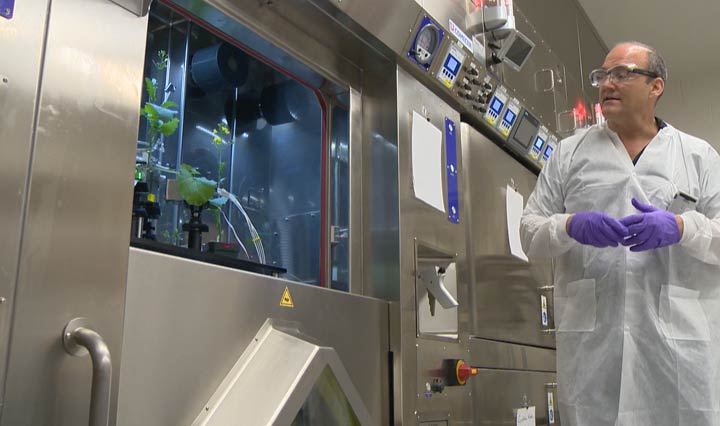Imagine if a producer of lentils, wheat or canola could see into the root of their crops to determine how and why they’re growing well, or poorly.

That’s essentially what researchers are trying to make happen using Canada’s first PhytoPET imaging system.
READ MORE: Canadian Light Source to collaborate with 1st synchrotron in Middle East
At the Saskatchewan Centre for Cyclotron Sciences in Saskatoon, a team of computer scientists, biologists, and physicists have collaborated to build and now test the new imaging detector.
“One of the challenges that we’re going to be facing in the 21st century is how to grow our crops even more sustainable, using less water, less fertilizer, higher yields, and more disease resistance,” Steven Siciliano, a professor of soil science at the University of Saskatchewan, said.
The PhytoPET scanner works like a PET-CT scanner, using radioisotopes to study a plant as it grows or in response to environmental stresses like drought, infection or insect attack.
“To be able to visualize the root structure, and how the transport of sugar happens in real-time, without us actually disturbing the plant, without destroying, without having to cut it,” Aram Teymurazyan, the Fedoruk research chair in nuclear imaging technologies, said.
READ MORE: Saskatchewan has fewer farms and older operators: Statistics Canada
Researchers hope to provide insights that can be used to develop new crop varieties by the end of the seven-year project.
The device is the result of a collaboration between the University of Regina, the Fedoruk Centre, University of Saskatchewan and Virginia’s Thomas Jefferson National Accelerator Facility.


Comments